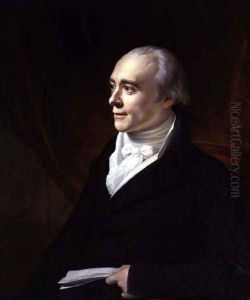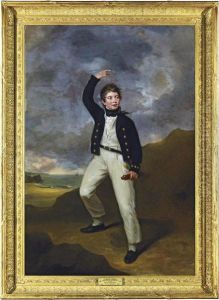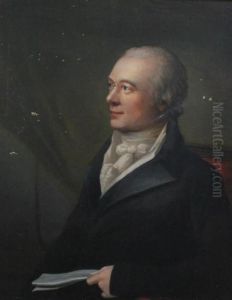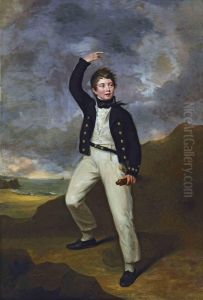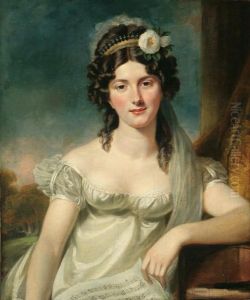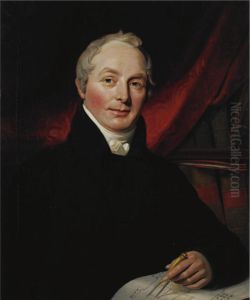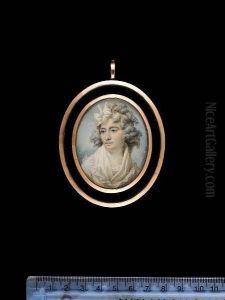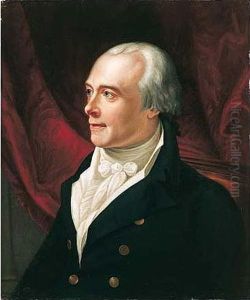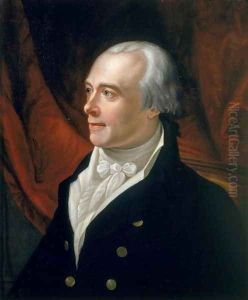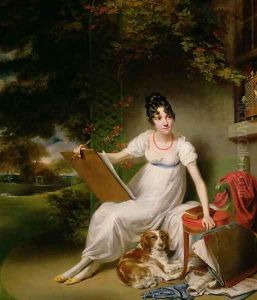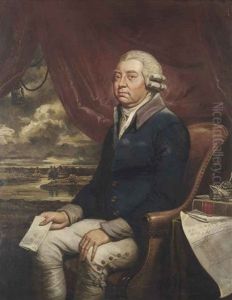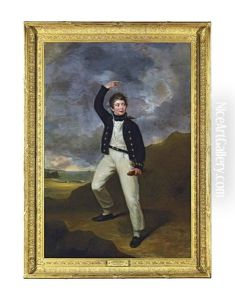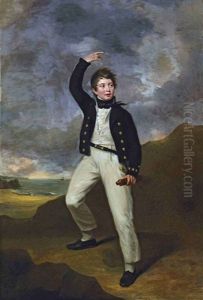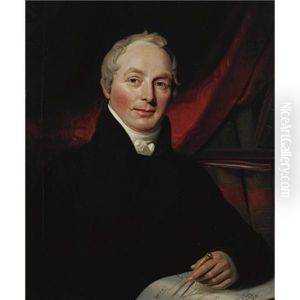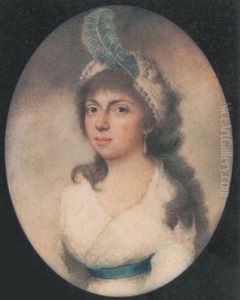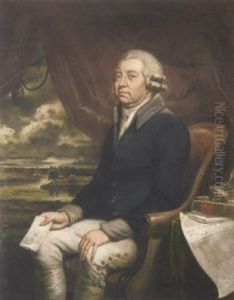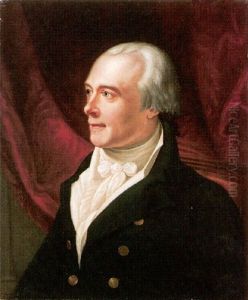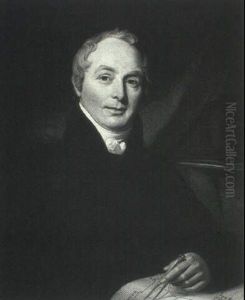George Francis Joseph Paintings
George Francis Joseph ARA (1764–1846) was a notable British portrait painter, whose life and work left a significant mark in the art world of the late 18th and early 19th centuries. Born into a time of great change and innovation, Joseph's artistic journey began in a period rich with opportunity for emerging artists. He developed his skills during a vibrant era of British art, amidst the backdrop of the Industrial Revolution and the burgeoning Romantic movement.
Joseph's education and early career are not extensively documented, but it is known that he gained recognition for his talent quite early on. His ability to capture the essence of his subjects with a remarkable blend of realism and emotion earned him a respected place among the portrait painters of his time. He was particularly adept at portraying his subjects in a way that reflected their status and personality, making each portrait a unique testament to the individual's character.
Throughout his career, George Francis Joseph exhibited a profound dedication to his art, contributing numerous works to the Royal Academy of Arts in London. His affiliation with the Academy, where he was elected an Associate Member (ARA) in 1813, played a significant role in his professional development and public recognition. This affiliation not only provided him with a platform to showcase his talent but also facilitated interactions with other prominent artists and patrons, further enriching his artistic perspective.
Joseph's clientele included many notable figures of his time, reflecting the high demand for his portraits among the elite and influential. His works were celebrated for their elegance, detail, and the skillful manner in which he rendered textures and fabrics, bringing his subjects to life on the canvas. Despite the prominence of portrait painting in his oeuvre, Joseph also explored other subjects, including historical and biblical scenes, demonstrating his versatility as an artist.
The legacy of George Francis Joseph extends beyond his death in 1846. His contributions to British art have been acknowledged through various exhibitions and retrospectives, and his works are held in esteemed public and private collections. As an artist, Joseph embodied the spirit of his era, capturing the complexities and nuances of the human condition with sensitivity and insight. His life and work continue to be studied and appreciated by art historians and enthusiasts, offering a window into the artistic and social dynamics of his time.
